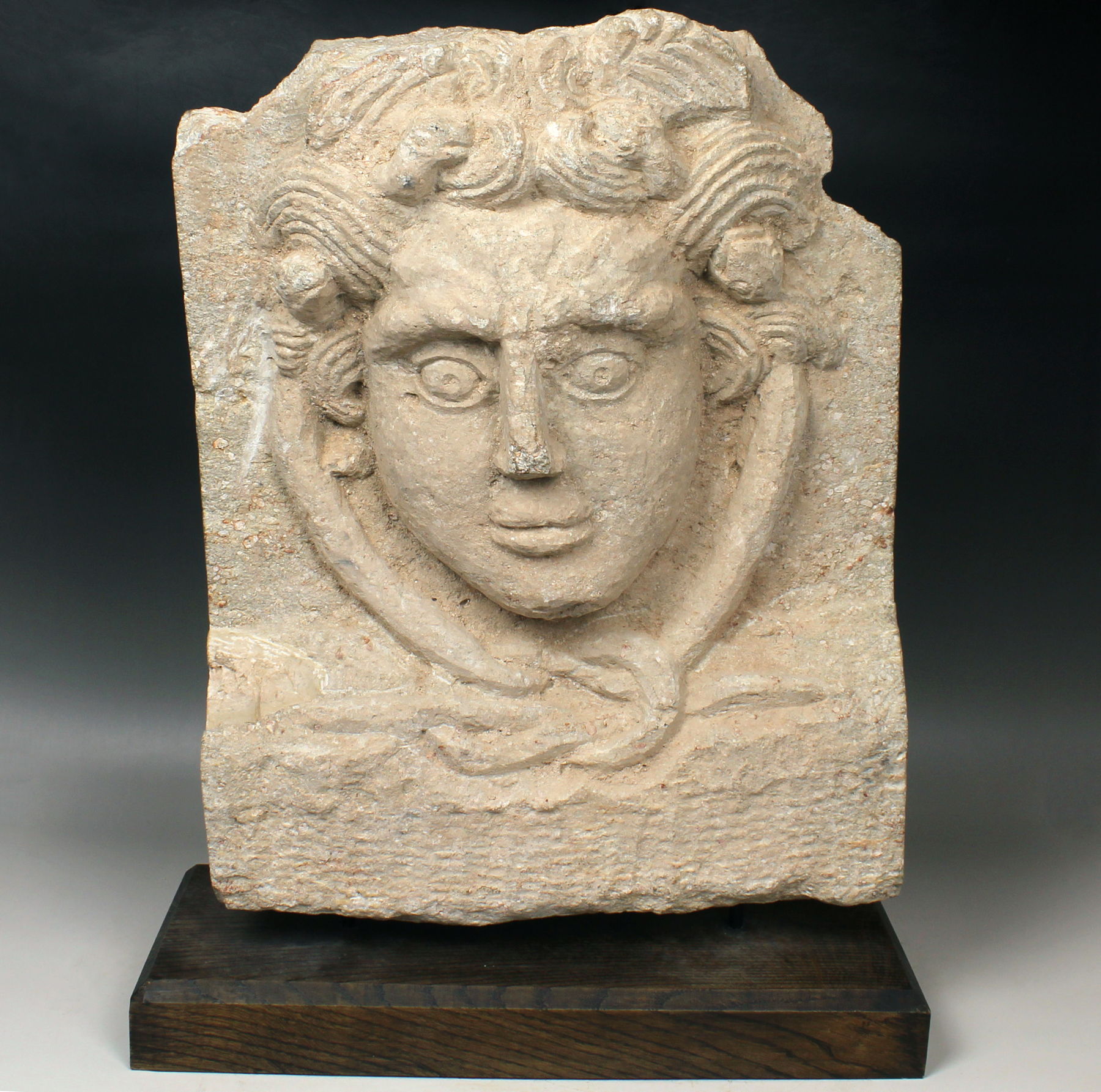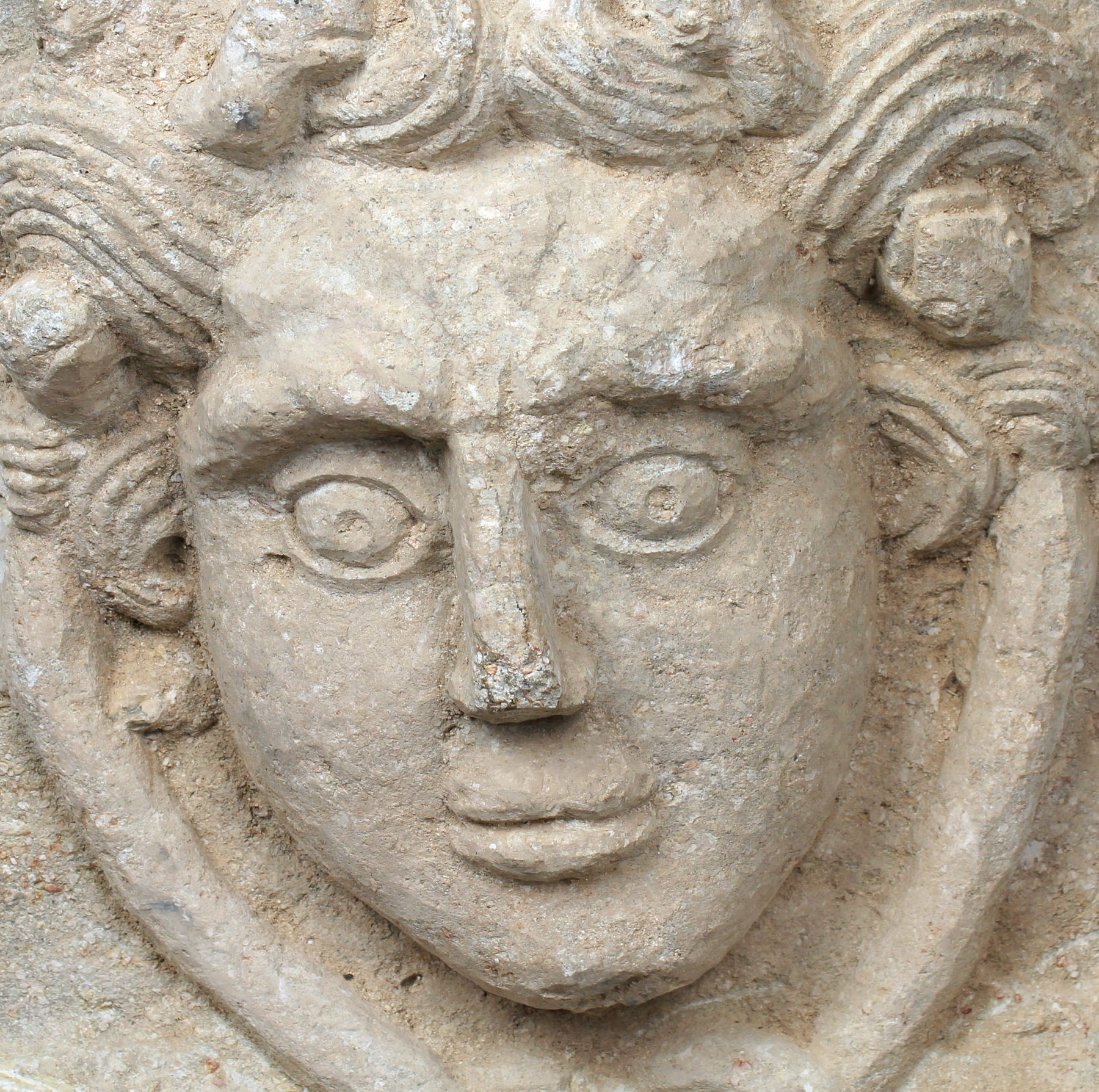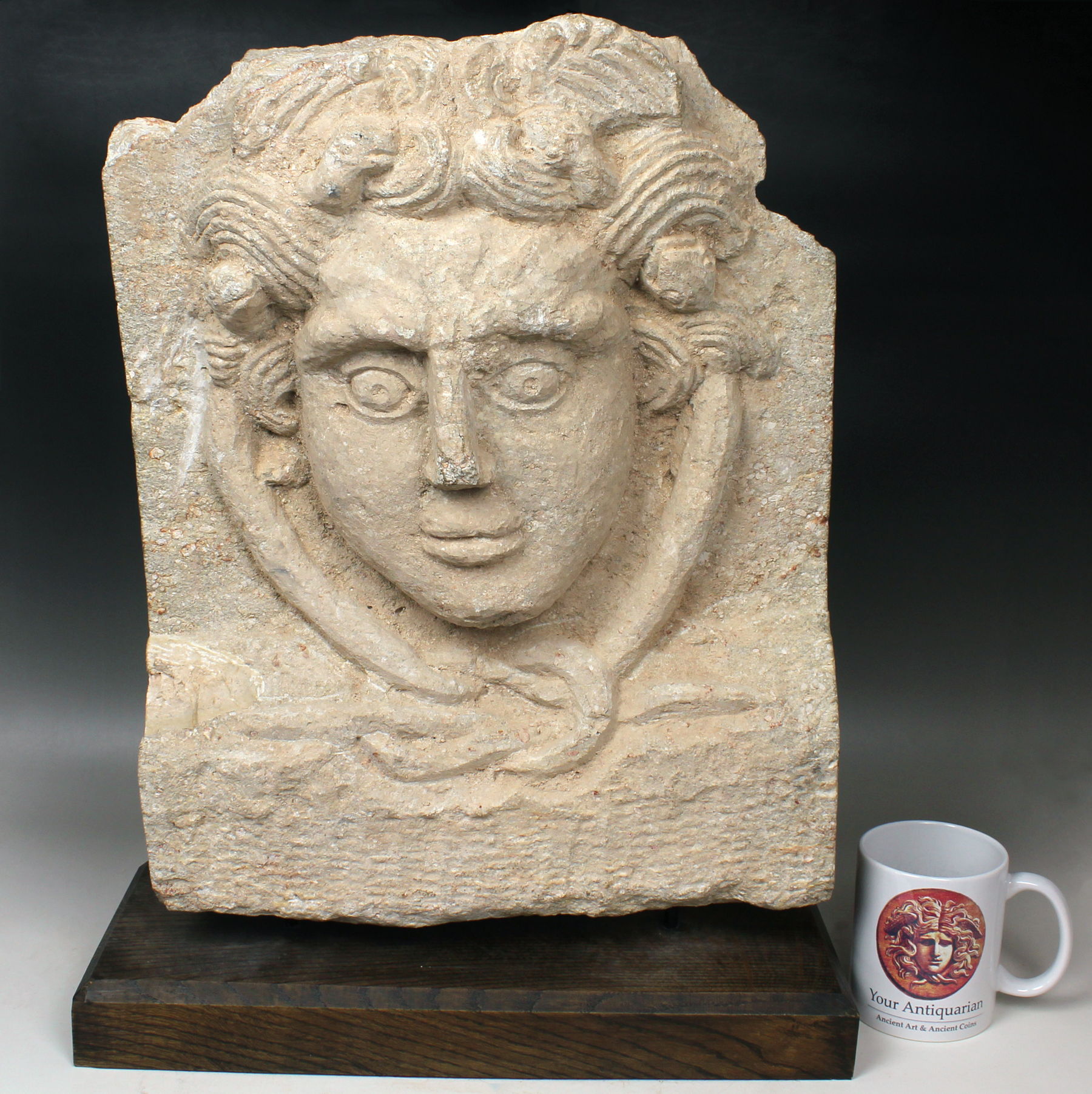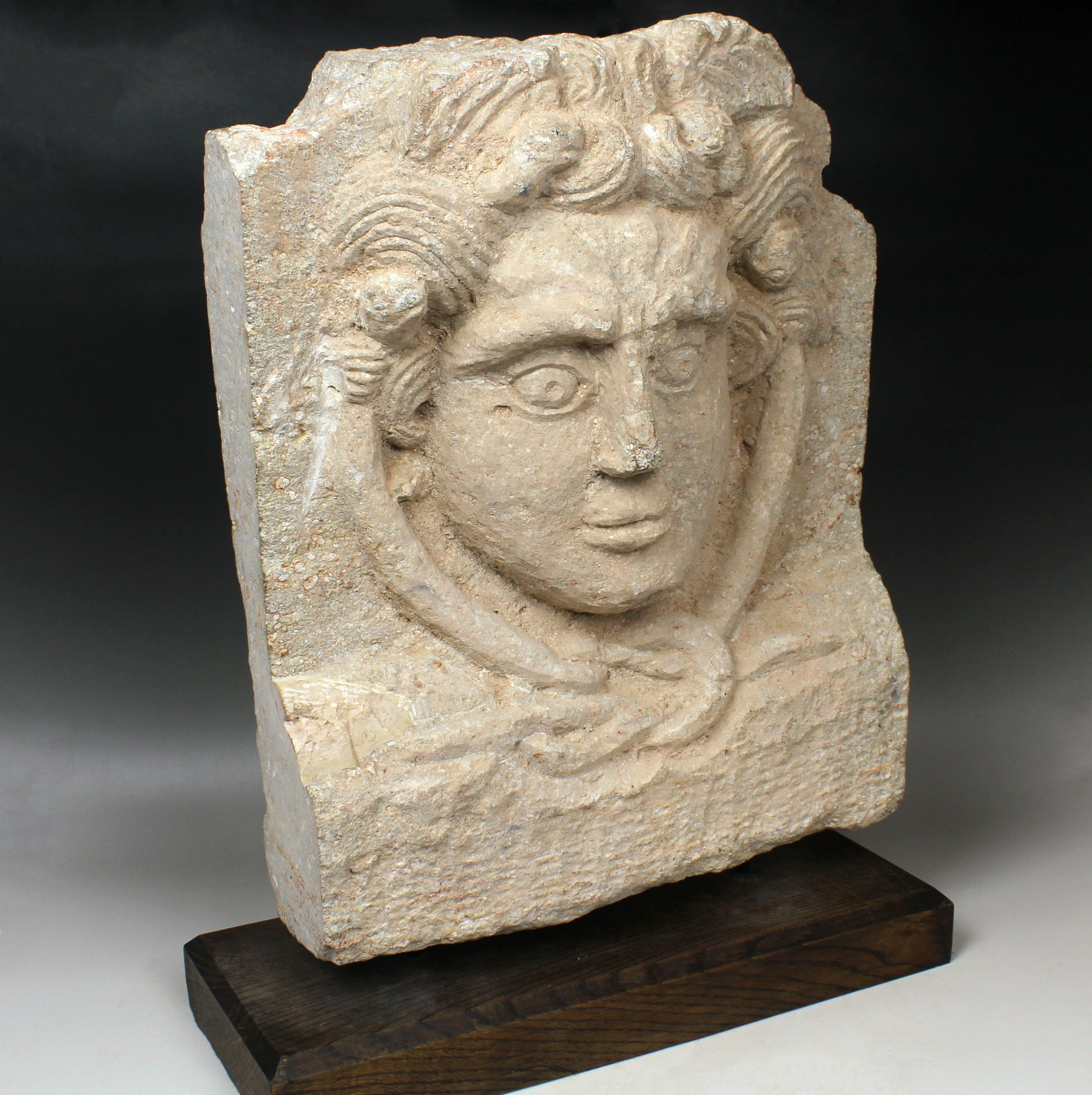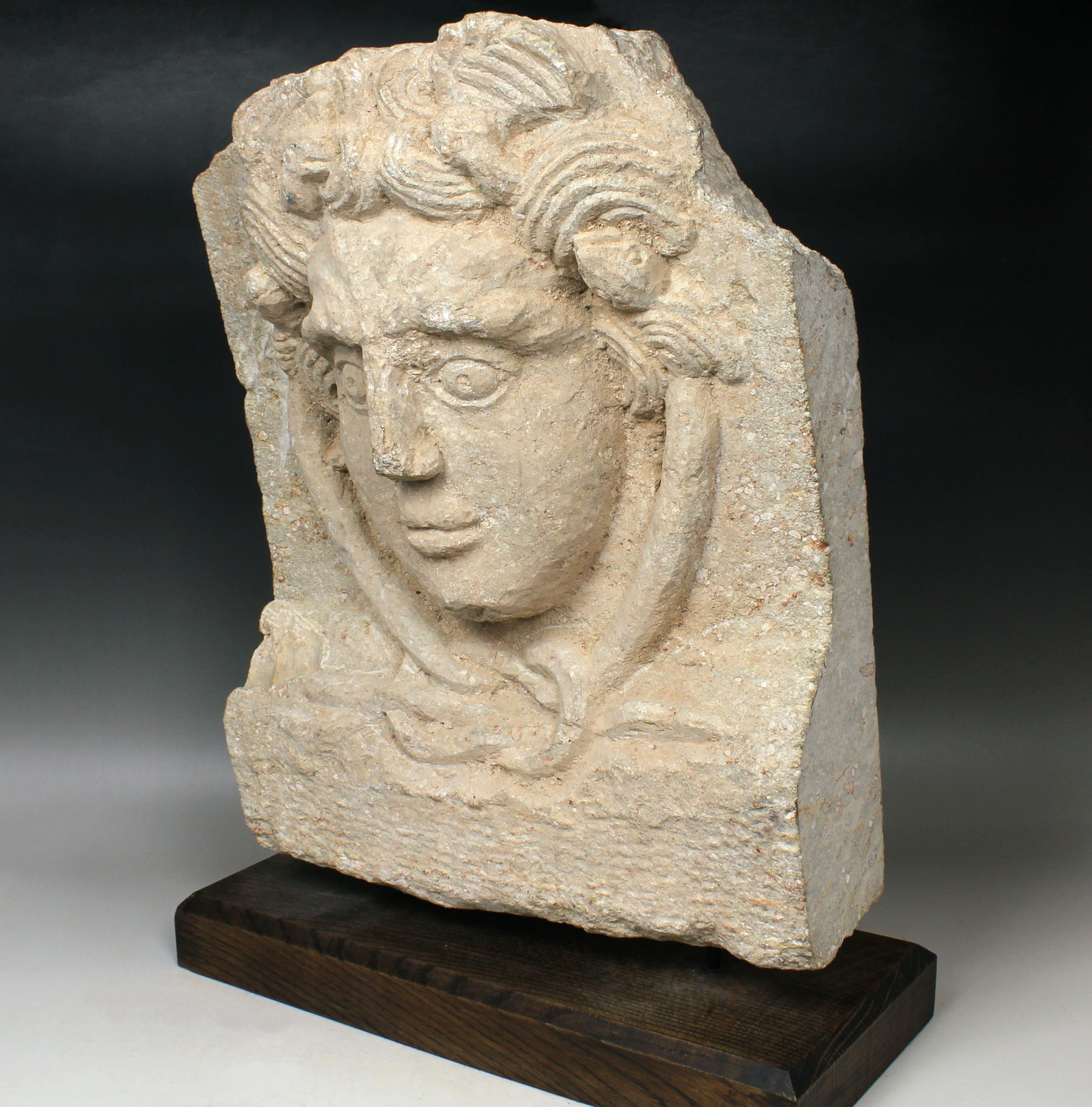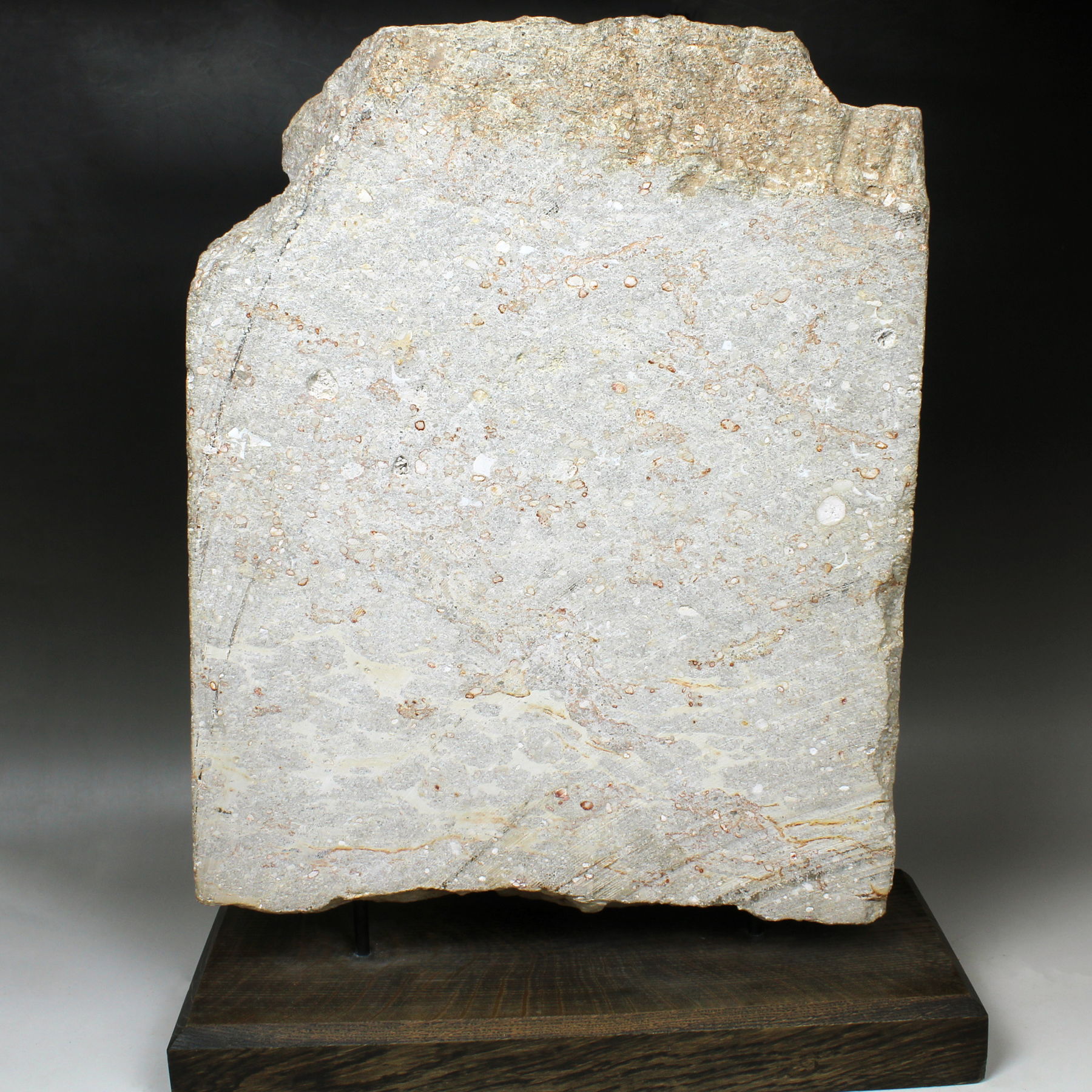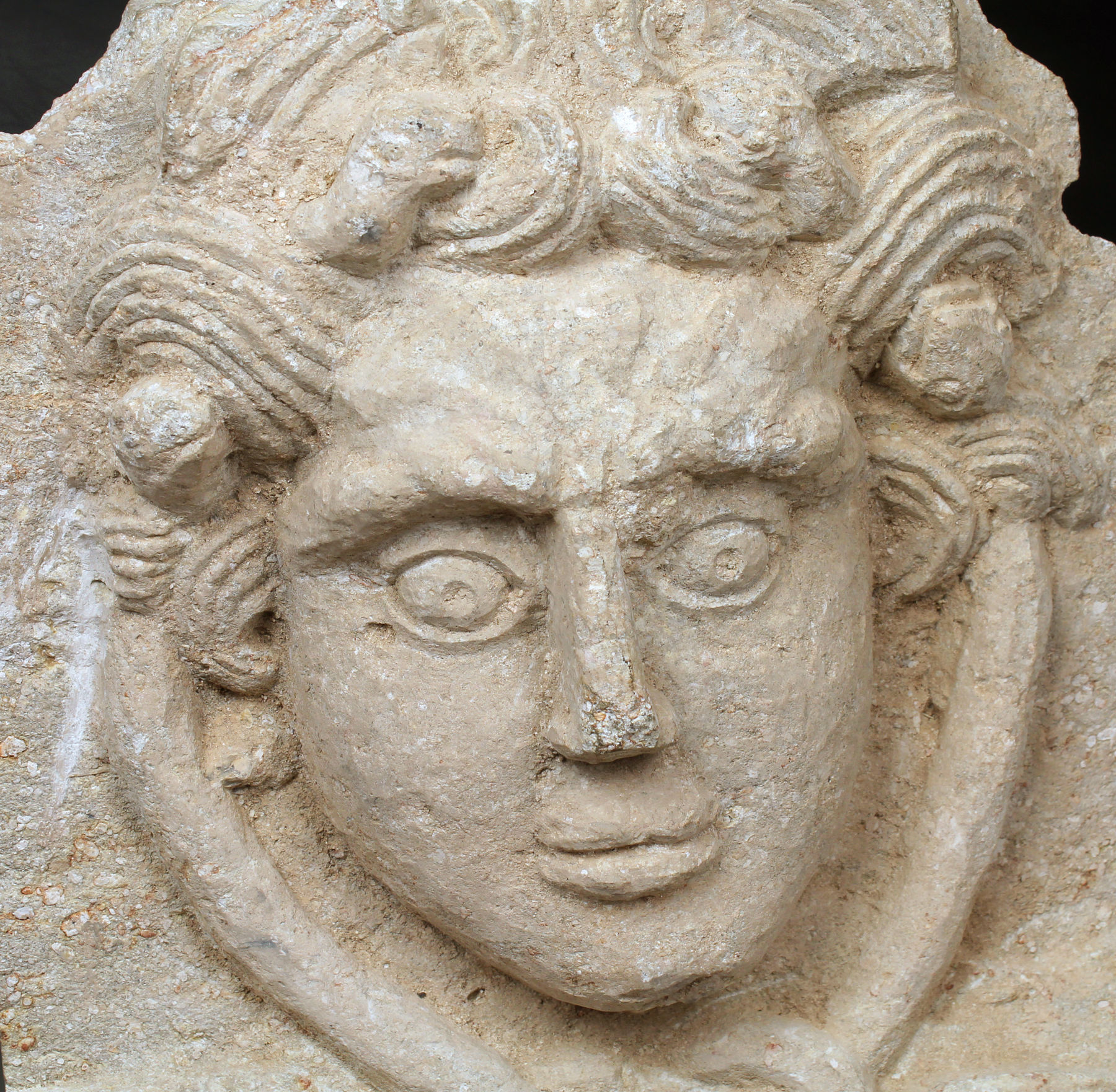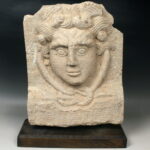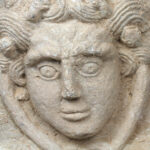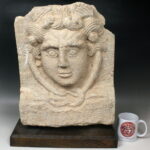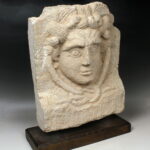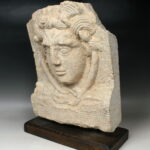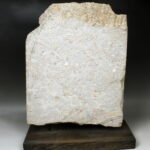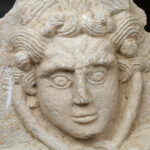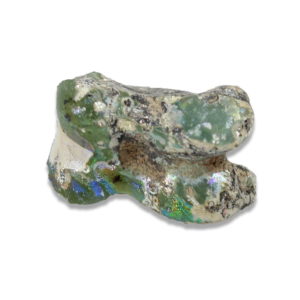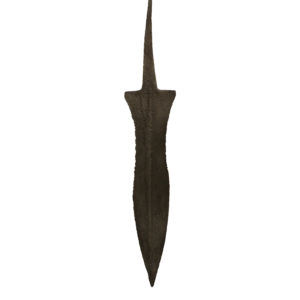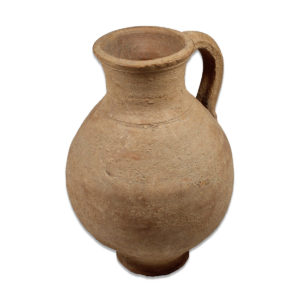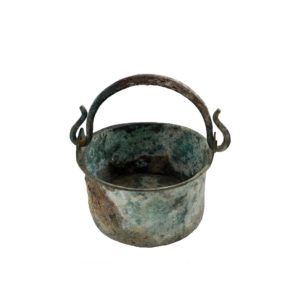Description
| ITEM | Relief of Medusa and Hercules knot |
| MATERIAL | Limestone |
| CULTURE | Roman |
| PERIOD | 2nd – 3rd Century A.D |
| DIMENSIONS | 465 mm x 362 mm x 103 mm (without stand) |
| CONDITION | Good condition. Includes stand |
| PROVENANCE | Ex English private collection, P.A., Hertfordshire, specialist collector of Greek Art, acquired between 1980s – 1990s |
In Roman mythology, Medusa was a Gorgon, a creature with snakes for hair whose gaze could turn anyone to stone. While the Greek mythological tradition portrayed Medusa primarily as a monstrous figure, in Roman art and culture, she often took on a more complex and varied role. The Roman interpretation of Medusa frequently blended elements of her monstrous aspect with her protective qualities, leading to a range of representations in various contexts.
One common motif in Roman art is the use of Medusa’s head as a protective symbol. The image of Medusa’s head, with its petrifying gaze, was believed to ward off evil and protect against harm. It appeared on a variety of objects, including household items like door knockers, as well as on armor and shields worn by soldiers. This protective aspect of Medusa was derived from her ability to avert danger with her gaze, turning potential threats to stone before they could harm the beholder.
In addition to her protective role, Medusa also featured prominently in Roman architectural reliefs and decorative elements. These depictions often portrayed her as a fearsome yet powerful figure, emphasizing her role as a guardian or protector. Medusa’s image adorned the facades of temples, public buildings, and private residences, serving as a symbol of strength and resilience.
The Hercules knot, also known as the “Herculean knot” or “Hercules’ knot,” symbolized strength, power, and unity. It was often depicted as a complex, interwoven knot with no clear beginning or end, representing the challenges and trials that Hercules, the legendary hero, faced and conquered throughout his life. The knot was associated with various mythological stories surrounding Hercules, particularly his Twelve Labors, which were tasks assigned to him as punishment for killing his family in a fit of madness induced by the goddess Hera.
The Hercules knot frequently appeared in Roman architectural reliefs, sculptures, and decorative elements as a symbol of protection and good fortune. It was often incorporated into designs on public buildings, temples, and monuments, serving as a visual reminder of Hercules’ legendary strength and the virtues of perseverance and determination.


